Carinaria japonica
Roger R. SeapyIntroduction
Carinaria japonica is a moderately large species, with a body length to 130-150 mm. The shell is compressed laterally and, when viewed from the side, is triangular in shape with a height to basal length ratio of 0.8-1.0. The keel is low initially, but increases in height with proximity to the shell aperture. The tail is moderately large, with a tall dorsal crest. The geographical distribution of the species is unique among carinariids; it is limited to the cool, temperate waters of the Transition Zone in the North Pacific Ocean.
Brief Diagnosis
A species of Carinaria with:
- Body length to 130-150 mm
- Viewed laterally, shell triangular in shape
- Keel increases in height between shell apex and aperture
- Tail moderately large, with a tall dorsal crest
Characteristics
- Body
- Body length usually less than about 100 mm (Seapy, 1980), although Dales (1953) reported a maximal length of 130 mm from the California Current. Most recently (March 2011), estimated body lengths to 150 mm were recorded from specimens washed ashore on a beach near Bodega Head, northern California following a storm (J. Sones, pers. comm.)
- Body divided into proboscis, trunk and tail regions (see title illustration)
- Dark purple to black coloration appears on the bodies of larger adults, notably at the anterior end of the proboscis, the foot and the dorsal fringe of the tail crest (see photographs below)
- Eye shape triangular in dorsal view
- Tail well developed, with a tall dorsal crest (see title illustration and second photograph above)
- Body length usually less than about 100 mm (Seapy, 1980), although Dales (1953) reported a maximal length of 130 mm from the California Current. Most recently (March 2011), estimated body lengths to 150 mm were recorded from specimens washed ashore on a beach near Bodega Head, northern California following a storm (J. Sones, pers. comm.)
- Shell
- Shell triangular in lateral view; ratio of height to basal length = 0.8-1.0 (see shell sketch below).
- Keel moderately low; keel height increases with proximity to shell aperture (see sketch and photograph below)
 Click on an image to view larger version & data in a new window
Click on an image to view larger version & data in a new window Click on an image to view larger version & data in a new window
Click on an image to view larger version & data in a new windowFigure. Sketch of Carinaria japonica shell (left), and in-situ photograph of visceral nucleus with transparent shell (right). Photograph enlarged from title illustration © and David Wrobel, respectively
- Shell triangular in lateral view; ratio of height to basal length = 0.8-1.0 (see shell sketch below).
- Larva
- Larva with a colorless velum except for a dark brown pigment patch at the end of each of the six velar arms, or lobes. Overall body color light brown, although the tentacles are transparent (Seapy and Thiriot-Quiévreux, 1994)
- Larval shell transparent and globular in shape, with an oblong aperture (see first SEM below left)
- Right side of larval shell with very small and numerous punctae, arranged in spiral rows on the shell surface. Second whorl of shell spire with a prominent spiral ridge, from which narrow, elevated striae radiate (see SEM below center)
- Left side of larval shell with a deep umbilicus; wall of umbilicus with about 18 broad, elevated spiral striae (see SEM below right)
- Larval shell consists of 3-2/3 whorls at the time of metamorphosis, with the adult shell (teleoconch) growing outward from the larval shell. The keel appears immediately on the teleoconch following metamorphosis (see SEM below)
 Click on an image to view larger version & data in a new window
Click on an image to view larger version & data in a new window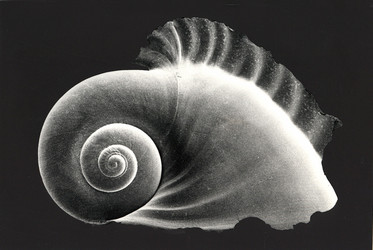
Figure. Right side of shell from a juvenile Carinaria japonica. Shell length = 2.3 mm. ©
- Larva with a colorless velum except for a dark brown pigment patch at the end of each of the six velar arms, or lobes. Overall body color light brown, although the tentacles are transparent (Seapy and Thiriot-Quiévreux, 1994)
- Radula
- Adult radula elongate and widening gradually with growth (see first color photograph below)
 Click on an image to view larger version & data in a new window
Click on an image to view larger version & data in a new window Click on an image to view larger version & data in a new window
Click on an image to view larger version & data in a new windowFigure. Radula of Carinaria japonica from a specimen washed ashore near Bodega Head, California. Views of the intact radula (left) and enlarged portion of the anterior end (right), beginning at the fourth radular row. Note the three clear, elongate cusps of the central (rachidian) teeth (right); also that the median cusps are slightly longer than the lateral ones. Photographs courtesy of Eric Sanford. © 2011 E. Sanford
- Marginal teeth strongly curved distally (see first SEM below)
- Central, rachidian teeth broad and bear three elongate pointed cusps, the middle one of which is slightly longer than the lateral ones (see the second color photograph immediately above and the second SEM below)
- Adult radula elongate and widening gradually with growth (see first color photograph below)
Distribution
The geographic distribution of Carinaria japonica is restricted to the Transition Zone Faunal Province in the North Pacific Ocean (McGowan, 1971; Seapy, 1974). This faunal province consists of a narrow band of surface waters at the Subarctic Boundary (located between the Subarctic Pacific and Central Pacific water masses at about latitude 41-43°N), extending eastward from Japanese waters and expanding toward the coast of North America to include the broad, southeastward-flowing California Current.
Feeding Habits
Among the species of Carinaria, the feeding habits and food preferences of C. japonica off southern California have been most completely studied (Seapy, 1980). Thaliaceans (small doliolids and salps), chaetognaths and copepods dominated numerically in the diet. Comparisons of the proportion of each prey species in the diet and availability in the plankton indicated preferential feeding on thaliaceans, chaetognaths and mollusks. In contrast crustaceans, and particularly copepods, were non-preferred prey. These patterns of prey preference may reflect differences among prey species in their ability to escape capture.
References
Dales, R. P. 1953. The distribution of some heteropod molluscs off the Pacific Coast of North America. Proceedings of the Zoological Society of London 123: 1007-1015.
McGowan, J. A. 1971. Oceanic biogeography of the Pacific, pp. 3-74. In: The micropaleontology of oceans, B. M. Funnell and W. R. Riedel (eds.). Cambridge University Press, Cambridge.
Seapy, R. R. 1974. Distribution and abundance of the epipelagic mollusk Carinaria japonica in waters off southern California. Marine Biology 24: 243-250.
Seapy, R. R. 1980. Predation by the epipelagic heteropod mollusk Carinaria cristata forma japonica. Marine Biology 60: 137-146.
Seapy, R. R. and C. Thiriot-Quiévreux. 1994. Veliger larvae of Carinariidae (Mollusca: Heteropoda) from Hawaiian waters. Veliger 37: 336-343.
Thiriot-Quiévreux, C. 1973. Observations de la radula des Hétéropodes (Mollusca Prosobranchia) au microscope électronique à balayage et interprétation fonctionnelle. Comptes rendus de l'Académie des Sciences, Serie D 276: 761-764.
About This Page

California State University, Fullerton, California, USA
Correspondence regarding this page should be directed to Roger R. Seapy at
Page copyright © 2011
 Page: Tree of Life
Carinaria japonica .
Authored by
Roger R. Seapy.
The TEXT of this page is licensed under the
Creative Commons Attribution License - Version 3.0. Note that images and other media
featured on this page are each governed by their own license, and they may or may not be available
for reuse. Click on an image or a media link to access the media data window, which provides the
relevant licensing information. For the general terms and conditions of ToL material reuse and
redistribution, please see the Tree of Life Copyright
Policies.
Page: Tree of Life
Carinaria japonica .
Authored by
Roger R. Seapy.
The TEXT of this page is licensed under the
Creative Commons Attribution License - Version 3.0. Note that images and other media
featured on this page are each governed by their own license, and they may or may not be available
for reuse. Click on an image or a media link to access the media data window, which provides the
relevant licensing information. For the general terms and conditions of ToL material reuse and
redistribution, please see the Tree of Life Copyright
Policies.
- First online 10 March 2008
- Content changed 04 May 2011
Citing this page:
Seapy, Roger R. 2011. Carinaria japonica . Version 04 May 2011. http://tolweb.org/Carinaria_japonica/28750/2011.05.04 in The Tree of Life Web Project, http://tolweb.org/





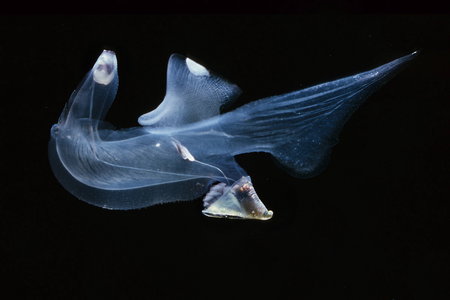
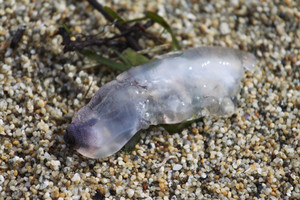
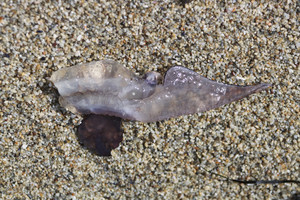

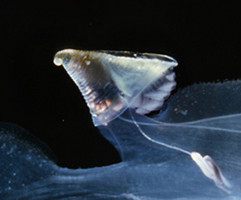
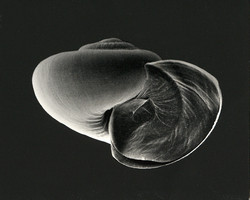

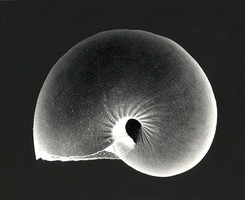
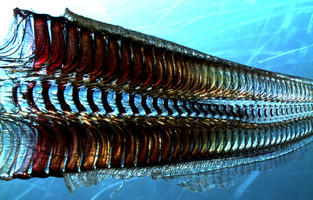
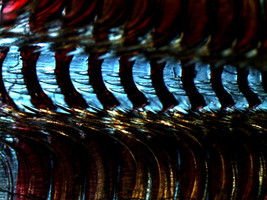

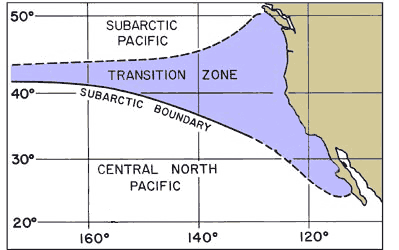



 Go to quick links
Go to quick search
Go to navigation for this section of the ToL site
Go to detailed links for the ToL site
Go to quick links
Go to quick search
Go to navigation for this section of the ToL site
Go to detailed links for the ToL site